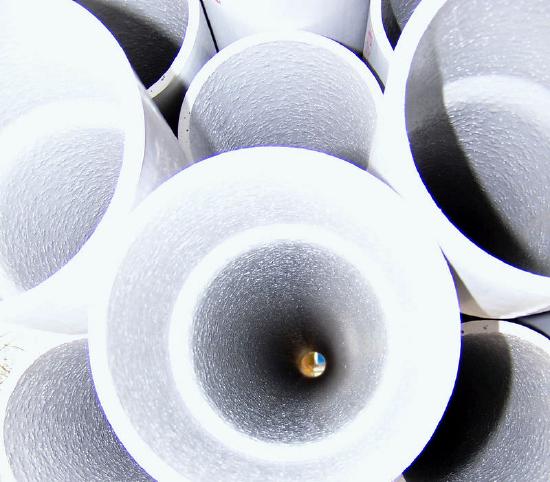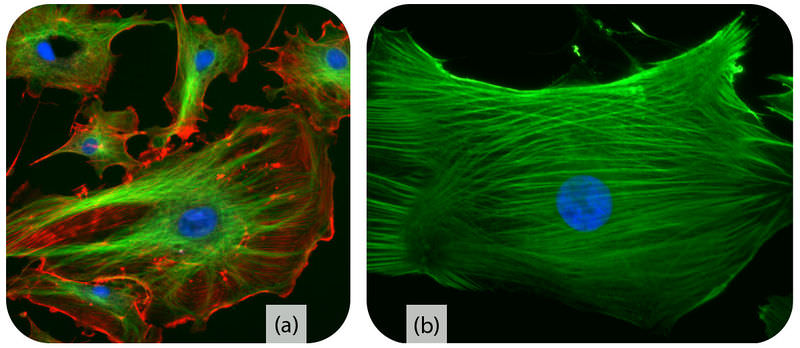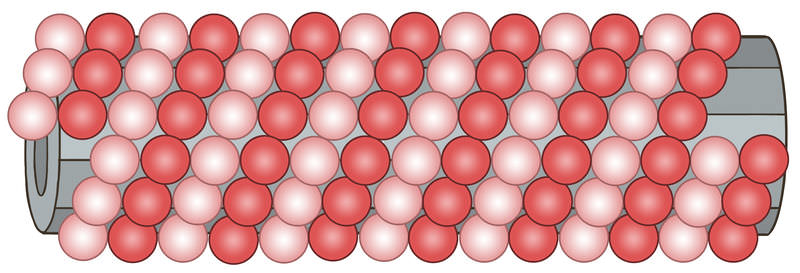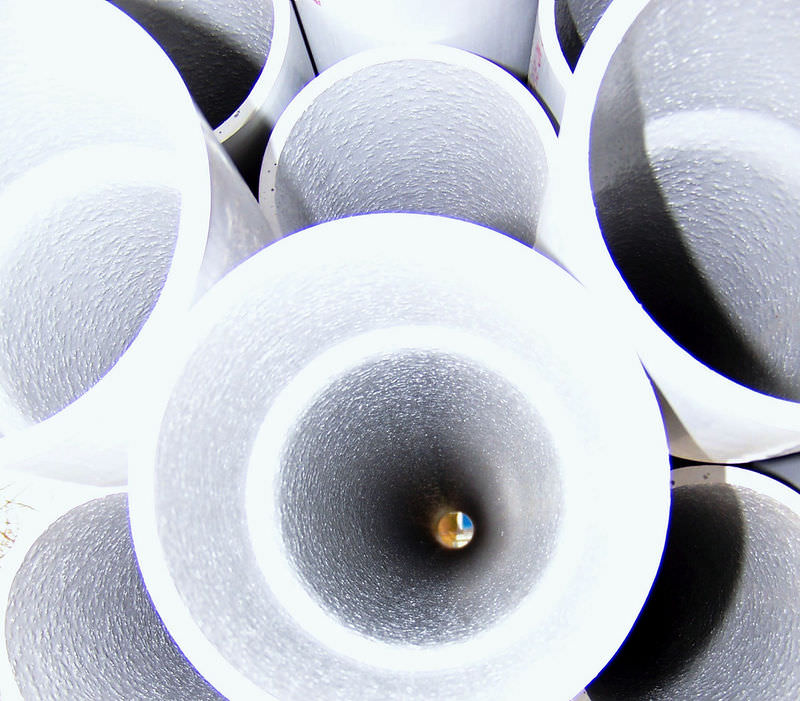2.35: Cytoplasm and Cytoskeleton
- Page ID
- 1443
\( \newcommand{\vecs}[1]{\overset { \scriptstyle \rightharpoonup} {\mathbf{#1}} } \)
\( \newcommand{\vecd}[1]{\overset{-\!-\!\rightharpoonup}{\vphantom{a}\smash {#1}}} \)
\( \newcommand{\dsum}{\displaystyle\sum\limits} \)
\( \newcommand{\dint}{\displaystyle\int\limits} \)
\( \newcommand{\dlim}{\displaystyle\lim\limits} \)
\( \newcommand{\id}{\mathrm{id}}\) \( \newcommand{\Span}{\mathrm{span}}\)
( \newcommand{\kernel}{\mathrm{null}\,}\) \( \newcommand{\range}{\mathrm{range}\,}\)
\( \newcommand{\RealPart}{\mathrm{Re}}\) \( \newcommand{\ImaginaryPart}{\mathrm{Im}}\)
\( \newcommand{\Argument}{\mathrm{Arg}}\) \( \newcommand{\norm}[1]{\| #1 \|}\)
\( \newcommand{\inner}[2]{\langle #1, #2 \rangle}\)
\( \newcommand{\Span}{\mathrm{span}}\)
\( \newcommand{\id}{\mathrm{id}}\)
\( \newcommand{\Span}{\mathrm{span}}\)
\( \newcommand{\kernel}{\mathrm{null}\,}\)
\( \newcommand{\range}{\mathrm{range}\,}\)
\( \newcommand{\RealPart}{\mathrm{Re}}\)
\( \newcommand{\ImaginaryPart}{\mathrm{Im}}\)
\( \newcommand{\Argument}{\mathrm{Arg}}\)
\( \newcommand{\norm}[1]{\| #1 \|}\)
\( \newcommand{\inner}[2]{\langle #1, #2 \rangle}\)
\( \newcommand{\Span}{\mathrm{span}}\) \( \newcommand{\AA}{\unicode[.8,0]{x212B}}\)
\( \newcommand{\vectorA}[1]{\vec{#1}} % arrow\)
\( \newcommand{\vectorAt}[1]{\vec{\text{#1}}} % arrow\)
\( \newcommand{\vectorB}[1]{\overset { \scriptstyle \rightharpoonup} {\mathbf{#1}} } \)
\( \newcommand{\vectorC}[1]{\textbf{#1}} \)
\( \newcommand{\vectorD}[1]{\overrightarrow{#1}} \)
\( \newcommand{\vectorDt}[1]{\overrightarrow{\text{#1}}} \)
\( \newcommand{\vectE}[1]{\overset{-\!-\!\rightharpoonup}{\vphantom{a}\smash{\mathbf {#1}}}} \)
\( \newcommand{\vecs}[1]{\overset { \scriptstyle \rightharpoonup} {\mathbf{#1}} } \)
\( \newcommand{\vecd}[1]{\overset{-\!-\!\rightharpoonup}{\vphantom{a}\smash {#1}}} \)
\(\newcommand{\avec}{\mathbf a}\) \(\newcommand{\bvec}{\mathbf b}\) \(\newcommand{\cvec}{\mathbf c}\) \(\newcommand{\dvec}{\mathbf d}\) \(\newcommand{\dtil}{\widetilde{\mathbf d}}\) \(\newcommand{\evec}{\mathbf e}\) \(\newcommand{\fvec}{\mathbf f}\) \(\newcommand{\nvec}{\mathbf n}\) \(\newcommand{\pvec}{\mathbf p}\) \(\newcommand{\qvec}{\mathbf q}\) \(\newcommand{\svec}{\mathbf s}\) \(\newcommand{\tvec}{\mathbf t}\) \(\newcommand{\uvec}{\mathbf u}\) \(\newcommand{\vvec}{\mathbf v}\) \(\newcommand{\wvec}{\mathbf w}\) \(\newcommand{\xvec}{\mathbf x}\) \(\newcommand{\yvec}{\mathbf y}\) \(\newcommand{\zvec}{\mathbf z}\) \(\newcommand{\rvec}{\mathbf r}\) \(\newcommand{\mvec}{\mathbf m}\) \(\newcommand{\zerovec}{\mathbf 0}\) \(\newcommand{\onevec}{\mathbf 1}\) \(\newcommand{\real}{\mathbb R}\) \(\newcommand{\twovec}[2]{\left[\begin{array}{r}#1 \\ #2 \end{array}\right]}\) \(\newcommand{\ctwovec}[2]{\left[\begin{array}{c}#1 \\ #2 \end{array}\right]}\) \(\newcommand{\threevec}[3]{\left[\begin{array}{r}#1 \\ #2 \\ #3 \end{array}\right]}\) \(\newcommand{\cthreevec}[3]{\left[\begin{array}{c}#1 \\ #2 \\ #3 \end{array}\right]}\) \(\newcommand{\fourvec}[4]{\left[\begin{array}{r}#1 \\ #2 \\ #3 \\ #4 \end{array}\right]}\) \(\newcommand{\cfourvec}[4]{\left[\begin{array}{c}#1 \\ #2 \\ #3 \\ #4 \end{array}\right]}\) \(\newcommand{\fivevec}[5]{\left[\begin{array}{r}#1 \\ #2 \\ #3 \\ #4 \\ #5 \\ \end{array}\right]}\) \(\newcommand{\cfivevec}[5]{\left[\begin{array}{c}#1 \\ #2 \\ #3 \\ #4 \\ #5 \\ \end{array}\right]}\) \(\newcommand{\mattwo}[4]{\left[\begin{array}{rr}#1 \amp #2 \\ #3 \amp #4 \\ \end{array}\right]}\) \(\newcommand{\laspan}[1]{\text{Span}\{#1\}}\) \(\newcommand{\bcal}{\cal B}\) \(\newcommand{\ccal}{\cal C}\) \(\newcommand{\scal}{\cal S}\) \(\newcommand{\wcal}{\cal W}\) \(\newcommand{\ecal}{\cal E}\) \(\newcommand{\coords}[2]{\left\{#1\right\}_{#2}}\) \(\newcommand{\gray}[1]{\color{gray}{#1}}\) \(\newcommand{\lgray}[1]{\color{lightgray}{#1}}\) \(\newcommand{\rank}{\operatorname{rank}}\) \(\newcommand{\row}{\text{Row}}\) \(\newcommand{\col}{\text{Col}}\) \(\renewcommand{\row}{\text{Row}}\) \(\newcommand{\nul}{\text{Nul}}\) \(\newcommand{\var}{\text{Var}}\) \(\newcommand{\corr}{\text{corr}}\) \(\newcommand{\len}[1]{\left|#1\right|}\) \(\newcommand{\bbar}{\overline{\bvec}}\) \(\newcommand{\bhat}{\widehat{\bvec}}\) \(\newcommand{\bperp}{\bvec^\perp}\) \(\newcommand{\xhat}{\widehat{\xvec}}\) \(\newcommand{\vhat}{\widehat{\vvec}}\) \(\newcommand{\uhat}{\widehat{\uvec}}\) \(\newcommand{\what}{\widehat{\wvec}}\) \(\newcommand{\Sighat}{\widehat{\Sigma}}\) \(\newcommand{\lt}{<}\) \(\newcommand{\gt}{>}\) \(\newcommand{\amp}{&}\) \(\definecolor{fillinmathshade}{gray}{0.9}\)
Does a cell have, or even need, a "skeleton"?
What do you get if you take some tubing, and make the tubes smaller and smaller and smaller? You get very small tubes, or microtubes. Very small tubes, or microtubules, together with microfilaments, form the basis of the "skeleton" inside the cell.
The Cytoplasm and Cytoskeleton
The cytoplasm consists of everything inside the plasma membrane of the cell, excluding the nucleus in a eukaryotic cell. It includes the watery, gel-like material called cytosol, as well as various structures. The water in the cytoplasm makes up about two thirds of the cell’s weight and gives the cell many of its properties.
Functions of the Cytoplasm
The cytoplasm has several important functions, including:
- suspending cell organelles.
- pushing against the plasma membrane to help the cell keep its shape.
- providing a site for many of the biochemical reactions of the cell.
The Cytoskeleton
The cytoskeleton is a cellular "scaffolding" or "skeleton" that crisscrosses the cytoplasm. All eukaryotic cells have a cytoskeleton, and recent research has shown that prokaryotic cells also have a cytoskeleton. The eukaryotic cytoskeleton is made up of a network of long, thin protein fibers and has many functions. It helps to maintain cell shape. It holds organelles in place, and for some cells, it enables cell movement. The cytoskeleton also plays important roles in both the intracellular movement of substances and in cell division. Certain proteins act like a path that vesicles and organelles move along within the cell. The threadlike proteins that make up the cytoskeleton continually rebuild to adapt to the cell's constantly changing needs. Three main kinds of cytoskeleton fibers are microtubules, intermediate filaments, and microfilaments.
- Microtubules, shown in the Figure below (a), are hollow cylinders and are the thickest of the cytoskeleton structures. They are most commonly made of filaments which are polymers of alpha and beta tubulin, and radiate outwards from an area near the nucleus called the centrosome. Tubulin is the protein that forms microtubules. Two forms of tubulin, alpha and beta, form dimers (pairs) which come together to form the hollow cylinders. The cylinders are twisted around each other to form the microtubules. Microtubules help the cell keep its shape. They hold organelles in place and allow them to move around the cell, and they form the mitotic spindle during cell division. Microtubules also make up parts of cilia and flagella, the organelles that help a cell move.
- Microfilaments, shown in Figure below (b), are made of two thin actin chains that are twisted around one another. Microfilaments are mostly concentrated just beneath the cell membrane, where they support the cell and help the cell keep its shape. Microfilaments form cytoplasmatic extensions, such as pseudopodia and microvilli, which allow certain cells to move. The actin of the microfilaments interacts with the protein myosin to cause contraction in muscle cells. Microfilaments are found in almost every cell, and are numerous in muscle cells and in cells that move by changing shape, such as phagocytes (white blood cells that search the body for bacteria and other invaders).
- Intermediate filaments differ in make-up from one cell type to another. Intermediate filaments organize the inside structure of the cell by holding organelles and providing strength. They are also structural components of the nuclear envelope. Intermediate filaments made of the protein keratin are found in skin, hair, and nails cells.
 (a) The eukaryotic cytoskeleton. Microfilaments are shown in red, microtubules in green, and the nuclei are in blue. By linking regions of the cell together, the cytoskeleton helps support the shape of the cell. (b) Microscopy of microfilaments (actin filaments), shown in green, inside cells. The nucleus is shown in blue.
(a) The eukaryotic cytoskeleton. Microfilaments are shown in red, microtubules in green, and the nuclei are in blue. By linking regions of the cell together, the cytoskeleton helps support the shape of the cell. (b) Microscopy of microfilaments (actin filaments), shown in green, inside cells. The nucleus is shown in blue.| Microtubules | Intermediate Filaments | Microfilaments | |
|---|---|---|---|
| Protein Composition | Tubulin, with two subunits, alpha and beta tubulin | One of different types of proteins such as lamin, vimentin, and keratin | Actin |
| Shape | Hollow cylinders made of two protein chains twisted around each other | Protein fiber coils twisted into each other | Two actin chains twisted around one another |
| Main Functions | Organelle and vesicle movement; form mitotic spindles during cell reproduction; cell motility (in cilia and flagella) | Organize cell shape; positions organelles in cytoplasm structural support of the nuclear envelope and sarcomeres; involved in cell-to-cell and cell-to-matrix junctions | Keep cellular shape; allows movement of certain cells by forming cytoplasmatic extensions or contraction of actin fibers; involved in some cell-to-cell or cell-to-matrix junctions |
| Representation |
 |
 |
 |
Summary
- The cytoplasm consists of everything inside the plasma membrane of the cell.
- The cytoskeleton is a cellular "skeleton" that crisscrosses the cytoplasm. Three main cytoskeleton fibers are microtubules, intermediate filaments, and microfilaments.
- Microtubules are the thickest of the cytoskeleton structures and are most commonly made of filaments which are polymers of alpha and beta tubulin.
- Microfilament are the thinnest of the cytoskeleton structures and are made of two thin actin chains that are twisted around one another.
Review
- What is the difference between cytoplasm and cytosol?
- List two roles of the cytoplasm.
- Name the three main types of cytoskeleton fibers.
- List two functions of the eukaryotic cytoskeleton.
| Image | Reference | Attributions |
 |
[Figure 1] | Source: (a) commons.wikimedia.org/wiki/File:FluorescentCells.jpg ; (b) commons.wikimedia.org/wiki/File:E7_amnion_cells.png License: CC BY-NC |
 |
[Figure 2] | Credit: (a) Courtesy of the US Government; (b) Weerapong Prasongchean Source: (a) commons.wikimedia.org/wiki/File:FluorescentCells.jpg ; (b) commons.wikimedia.org/wiki/File:E7_amnion_cells.png License: Public Domain |
 |
[Figure 3] | License: CC BY-NC |
 |
[Figure 4] | License: CC BY-NC |
 |
[Figure 5] | License: CC BY-NC |

